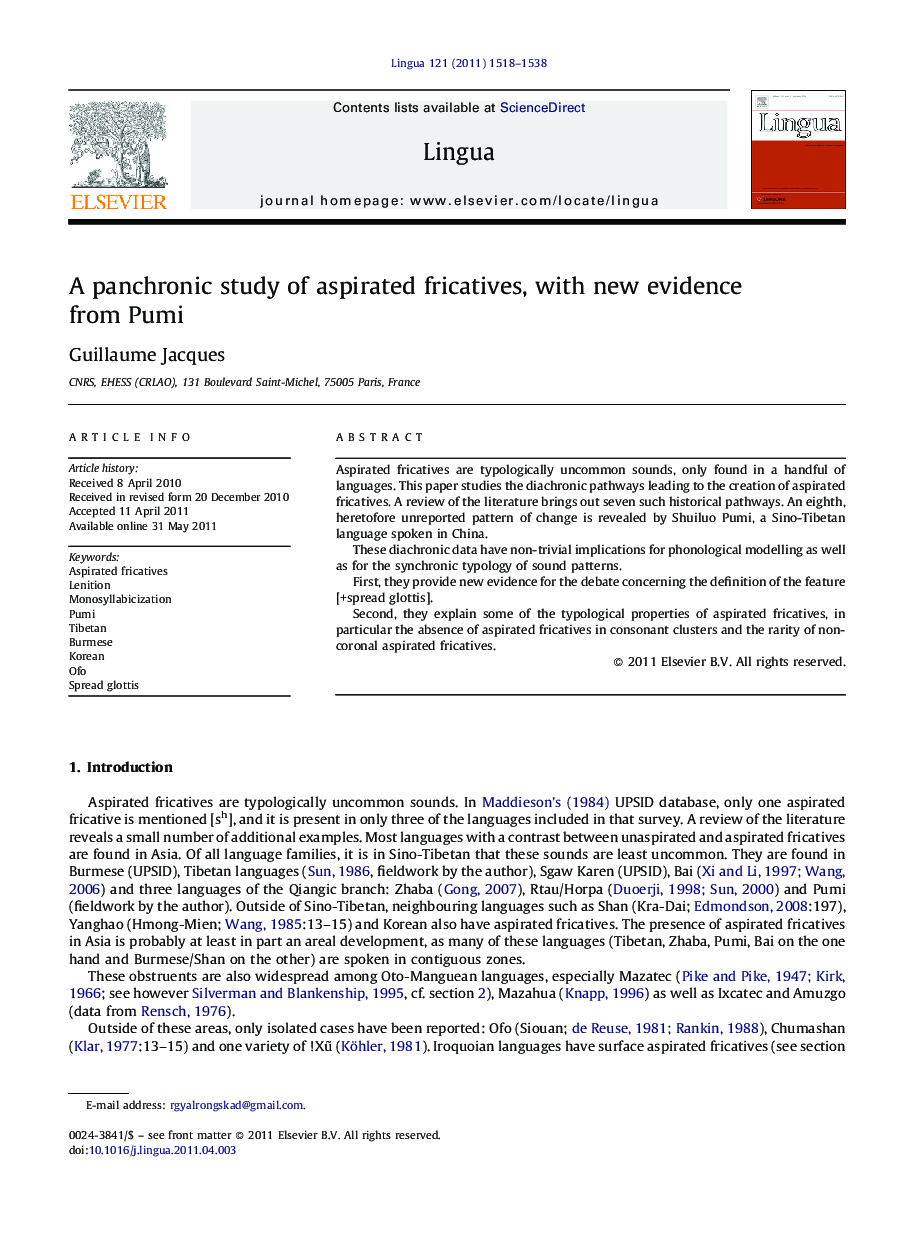| Article ID | Journal | Published Year | Pages | File Type |
|---|---|---|---|---|
| 935944 | Lingua | 2011 | 21 Pages |
Aspirated fricatives are typologically uncommon sounds, only found in a handful of languages. This paper studies the diachronic pathways leading to the creation of aspirated fricatives. A review of the literature brings out seven such historical pathways. An eighth, heretofore unreported pattern of change is revealed by Shuiluo Pumi, a Sino-Tibetan language spoken in China.These diachronic data have non-trivial implications for phonological modelling as well as for the synchronic typology of sound patterns.First, they provide new evidence for the debate concerning the definition of the feature [+spread glottis].Second, they explain some of the typological properties of aspirated fricatives, in particular the absence of aspirated fricatives in consonant clusters and the rarity of non-coronal aspirated fricatives.
► In this paper we provide original data from Pumi and Tibetan. ► These data illustrate previously undocumented diachronic origins for aspirated fricatives. ► We study the diachronic origin of aspirated fricatives from a cross-linguistic perspective. ► We show that four main pathways leading to the creation of aspirated fricatives are attested. ► We document an uncommon case of cluster reduction and stop lenition in Pumi.
